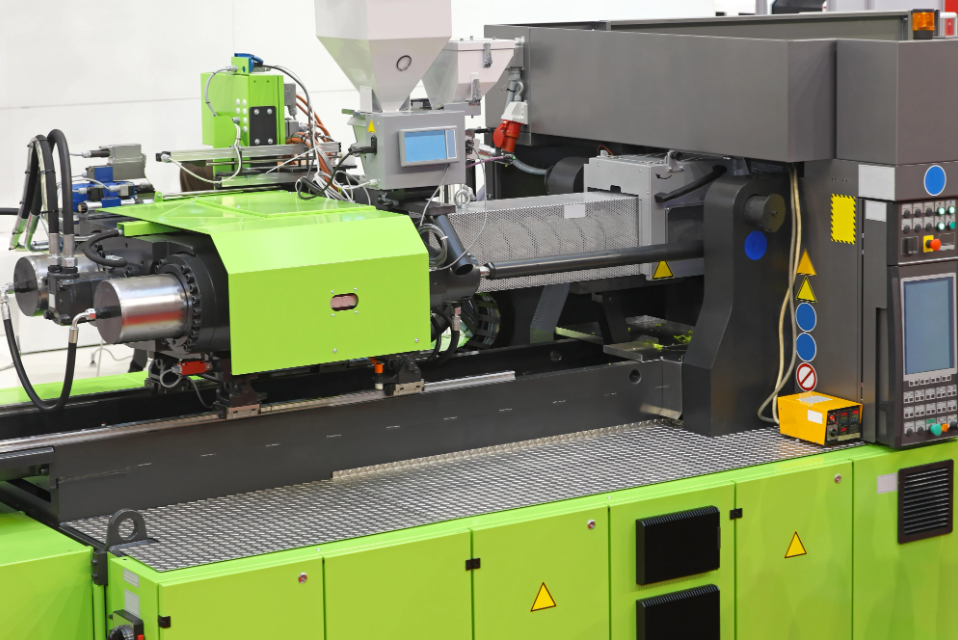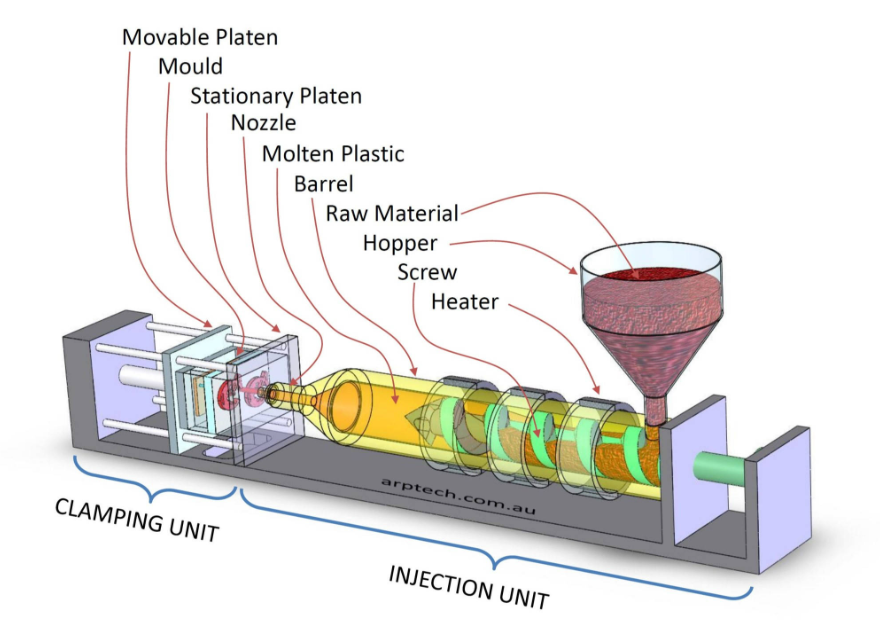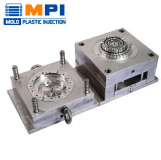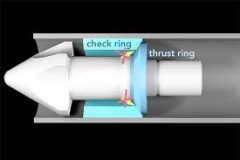Introduction
Injection moulding is a typical manufacturing process in which molten plastic is injected into a mould to create a variety of products and parts. For the end product to be as high-quality and functional as possible, the right sort of plastic must be chosen. In this article, we’ll analyse the numerous plastics often used for injection moulding and their unique properties, applications, and benefits. This manual will provide wise counsel and expert information, whether you are a business professional or simply interested in plastics.

What Type of Plastic is Used for Injection Moulding?
Polyethylene
Due to its strong chemical resistance and low moisture absorption, polyethylene, also referred to as PE, is a versatile thermoplastic used in injection moulding. The types of it are LDPE (Low-Density Polyethylene) and HDPE (High-Density Polyethylene). Bottles, containers, and numerous household products are all made from PE.
Polypropylene
PP, often known as polypropylene, is a common material for injection moulding. It is ideal for manufacturing consumer items, medical gadgets, and automotive parts thanks to its high strength, superior chemical resistance, and relatively low melting point.
Polystyrene
Because of its transparency and impact resilience, polystyrene, frequently abbreviated as PS, is a popular material. It is frequently utilised to create CD cases, packaging components, and covert flatware.
Acrylonitrile Butadiene Styrene
Popular engineering thermoplastic ABS has great mechanical and impact resistance. Toys, electronic housings, and automobile parts are all frequently made with it.
Polyvinyl Chloride
PVC is a flexible material that has strong chemical resistance and flame-retardant qualities. Vinyl records, pipes, and fittings are all made with its help through the process of injection moulding.
Polycarbonate
A high-performance material recognised for its remarkable transparency and impact resistance is polycarbonate. It is frequently employed in the automobile, aerospace, and electronics sectors.
Nylon (Polyamide)
Nylon is a strong and flexible material with excellent wear properties and a high heat resistance. Production of gears, bearings, and mechanical components are a few of its uses.
Polyethylene Terephthalate
PET is a well-liked material for creating bottles and containers because of its clarity, toughness, and recyclable attributes. It is extensively used in the packaging industry for foods and drinks.
Polyoxymethylene
A low-friction engineering plastic appropriate for precision parts in the automotive, electrical, and consumer goods industries is POM, commonly referred to as acetal.
Polymethyl Methacrylate
POM, commonly referred to as acetal, is a low-friction engineering plastic appropriate for precision parts in the automotive, electrical, and consumer goods industries.
Polycarbonate-ABS Blend
Polycarbonate and ABS are mixed to create PC-ABS, which combines the best qualities of both materials. It is frequently utilised in electronics and vehicle interiors.
High-Impact Polystyrene
Polystyrene that has been modified to have improved impact resistance is known as HIPS. Toys, refrigerator liners, and packaging materials are all made of it.
Polyphenylene Sulfide
High-performance thermoplastic PPS is renowned for its outstanding dimensional stability and chemical resistance. Both the electrical and automotive industries employ it.
Polyether Ether Ketone
Exceptional heat and chemical resistance characterise PEEK, a high-performance material. Applications for it include industrial, medicinal, and aeronautical fields.
Polysulfone
PSU is a clear plastic with great mechanical qualities and good heat resistance. It has uses in the automotive and medical industries.
Polyetherimide
PEI is a high-temperature plastic with excellent mechanical properties and flame resistance. It is commonly used in electrical and aerospace applications.
Liquid Silicone Rubber
LSR is a versatile material used in injection moulding for producing flexible parts and medical devices.
Thermoplastic Polyurethane
TPU is a flexible plastic with excellent abrasion resistance and toughness. It is commonly used in automotive and consumer goods industries.
Polyurethane
PU is a durable and versatile material used for creating foams, gaskets, and seals in various industries.
Polypropylene Carbonate
PPC is an eco-friendly plastic used in injection moulding for sustainable and biodegradable products.
Thermoplastic Elastomer
TPE is a blend of plastic and rubber, offering flexibility and weather resistance. It is used in automotive and household applications.
Polyether Block Amide
PEBA is a flexible and durable material used in sports equipment, medical devices, and automotive components.
Thermoplastic Polyester
TPE-E is a high-performance plastic used in automotive and industrial applications.
Biodegradable Plastics
Explore the latest advancements in biodegradable plastics used for injection moulding and their environmental benefits.
Recycled Plastics
Discover how recycled plastics are being used in injection moulding to promote sustainability and reduce environmental impact.

FAQs
What type of plastic is best for small injection moulded parts?
Materials like ABS, Polystyrene, or Polypropylene are frequently chosen for small injection moulded parts due to their cost effectiveness and ease of processing.
Which plastic is suitable for high-temperature applications?
High-performance polymers with remarkable mechanical capabilities at high temperatures, such as PEEK, PEI, and PSU, are perfect for high-temperature applications.
Can I use recycled plastic for injection moulding?
Yes, a variety of polymers can be recycled and used in injection moulding procedures, helping to promote a more environmentally friendly production process.
What are the considerations for choosing the right plastic for medical devices?
For the sake of patient safety, considerations including biocompatibility, sterilisation techniques, and chemical resistance are critical when choosing plastic for medical devices.
Is biodegradable plastic suitable for long-lasting products?
Due to their breakdown characteristics, biodegradable plastics are more appropriate for single-use and transient products than for long-lasting ones.
Conclusion
In conclusion, the final goods’ quality, usability, and sustainability are significantly influenced by the plastic used for injection moulding. Each type of plastic has a distinct set of qualities that make it appropriate for particular uses across a range of industries. There is a suitable plastic available whether you require a flexible plastic for medical equipment or a high-temperature resistant substance for aircraft components.
This comprehensive book covers the most widely used injection moulding polymers in depth, including Acrylonitrile Butadiene Styrene (ABS), Polyethylene (PE), Polypropylene (PP), Polystyrene (PS), and many others. We have also talked about substitutes that are more eco-friendly and contribute to a sustainable and greener future, like recycled materials and biodegradable polymers.
It is crucial to think about things like material qualities, application requirements, and environmental impact when you start your adventure with injection moulding. Your decision-making can be further improved by seeking the advice of seasoned experts and keeping up with the most recent advancements in plastics technology.
Remember that the plastics industry is continuously evolving as producers and researchers try to develop new and better materials for a variety of applications. By maintaining our knowledge and exercising sound judgement, we can assist the industrial sector in becoming more efficient and ecologically aware.
So, the next time you wonder, “What type of plastic is used for injection moulding?” Remember that no one method works in every circumstance. Each type of plastic has a certain use, and it is the manufacturers’, engineers’, and designers’ duty to select the one that best serves those uses.


